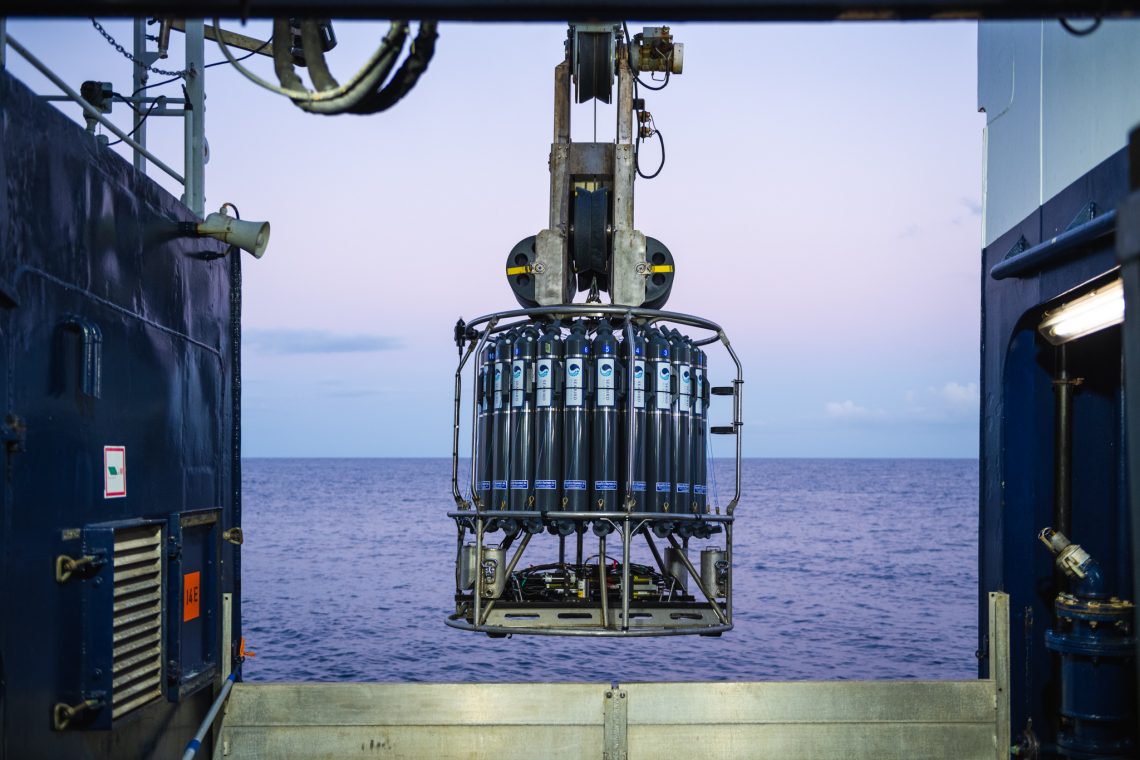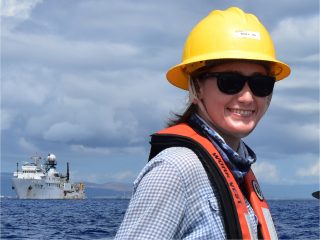At the National Marine Fisheries Service (NOAA Fisheries), we are responsible for the conservation, protection, and recovery of marine mammals in U.S. waters. In order to fulfill this mission we need to learn as much as we can about the protected species. This is easier for some species than others.
In Hawaii we have four species of beaked whales. Beaked whales are very deep diving animals, they can dive to depths of over 2,000 meters deep (that is more than a mile beneath the ocean’s surface) and hold their breath for over an hour. They come to the surface only to breath, and only for a few minutes at a time, so they can be very hard to find using traditional visual survey methods. But lucky for us, beaked whales also make sounds, echolocation clicks, to find their food during their deep foraging dives. Sound travels much further than light in water, and therefore by using their foraging sounds we can detect these whales from much farther away than we can by visually looking for them.
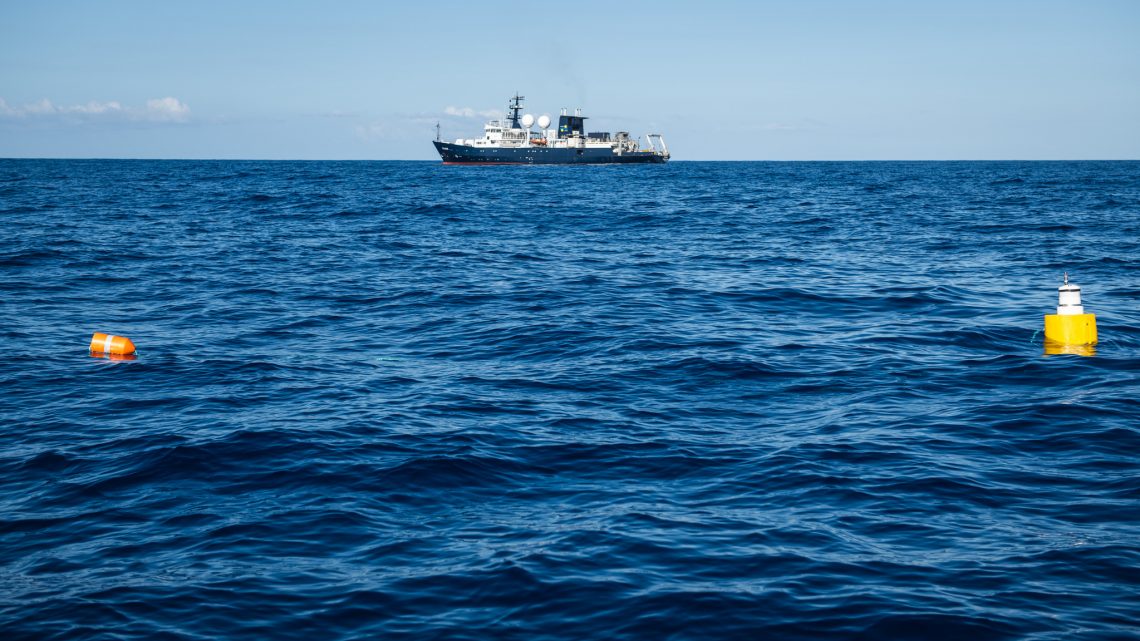
Utilizing Acoustics And Environmental DNA
Acoustic monitoring of marine mammals is becoming increasingly common, and scientists are developing all sorts of new technologies to better listen to the ocean. At NOAA, researchers have developed a novel method of acoustic monitoring that uses drifting buoys outfitted with two hydrophones (underwater microphones) and an archival recorder, called DASBRs. Since the buoys are autonomous and drift with the current they are very quiet, which allows them to better detect the sounds of the animals in the ocean. But because the recorders are completely autonomous we must get them back in order to get the data and we cannot listen to the whales in real time.
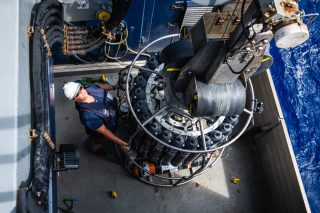
While acoustic monitoring is a very useful tool, there are still some things we can’t learn by listening to whale sounds. In most cases we can not tell the number of animals in the group, nor the sexes of the animals, and these are both important things to know when trying to accurately estimate the size of a population. Traditionally we would use biopsy methods to directly collect skin and blubber from an individual animal to get a sample of its DNA and learn more about the individual. But biopsy methods require a very close approach to the whale, can have a high miss rate, and will only tell you about the individual animal that you biopsy. In recent years a new method of DNA collection has come about. All animals shed trace amounts of skin and other cells from their body as they move through their environment. Researchers have begun to sample the environment (water, soil, snow, etc.) near an animal and then test for DNA in these shed cells using a method called environmental DNA or eDNA.
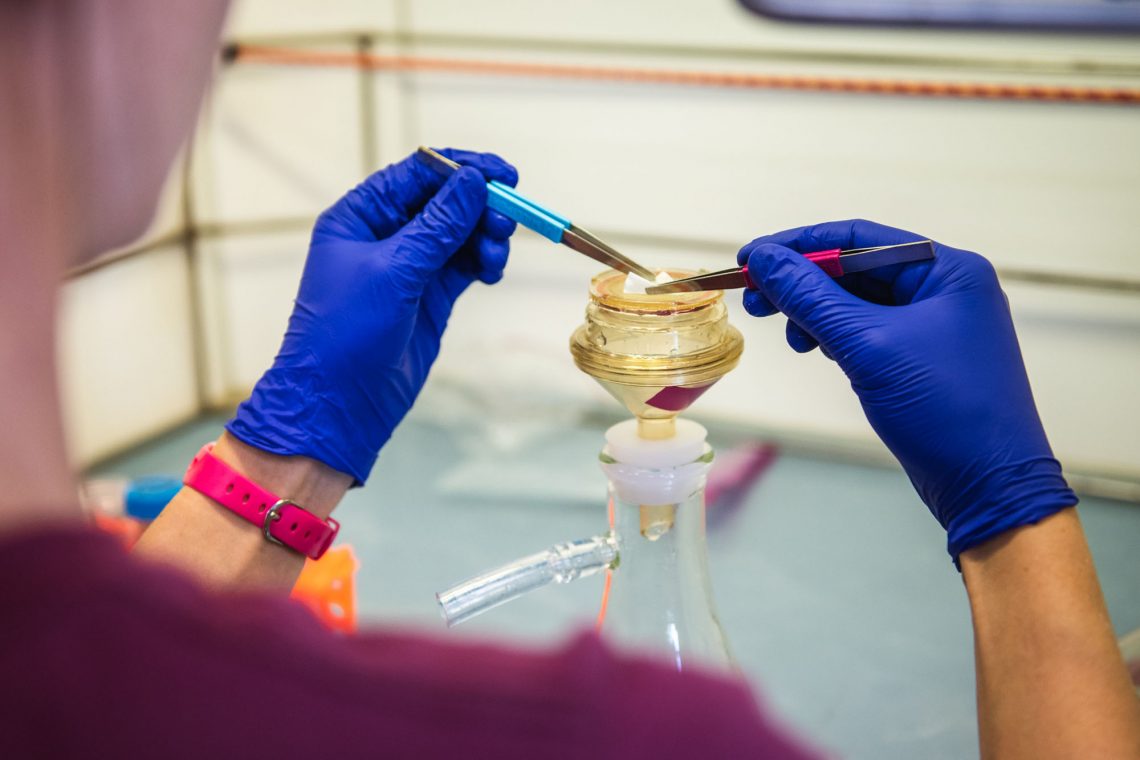
Early Results, Encouraging Sounds!
On our cruise on the R/V Falkor we went to sites where we have heard the Hawaiian beaked whales before and deployed the DASBR recorders in a pattern that will hopefully allow us to triangulate any vocalizing beaked whales in the area and get their exact position. We then used the ship’s CTD to collect water samples from 6 depths down to 1000m. We filtered these water samples through a very small mesh filter in order to catch any cells from the whales and will send the samples off for eDNA processing. By combining cutting edge eDNA and acoustic technology we are hoping to learn more about these deep diving, cryptic whales, and maybe even figure out what species of beaked whale is making the ‘cross seamount beaked whale’ calls. The cross seamount beaked whale has been heard in Hawaii before, mostly echolocating at night, but scientists have never actually seen the whales. So by combining eDNA with acoustics we have a shot at finally figuring out which species is making these calls.
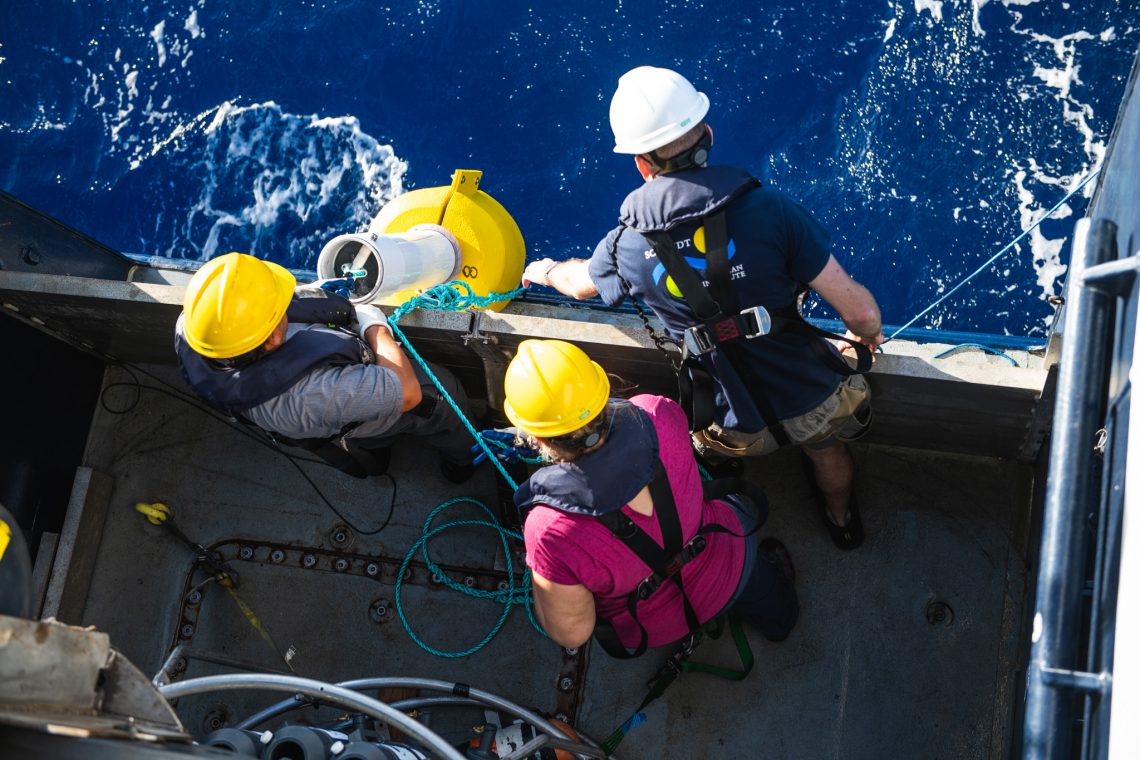
All of the new technology we used on the cruise is archival, which means we still have work to do before we will know if we were successful. But we have already analyzed the recordings from one of the DASBRs and we know we heard at least two of our beaked whale species! So we have a pretty good chance of having collected some eDNA as well! If we find beaked whale eDNA in our samples it will be the first time ever that this new technology has been successfully applied to these hard to study whales. So now it’s back to the lab for the less exciting, but just as important part of our project: data and sample processing. We are keeping our fingers crossed. Wish us luck!
